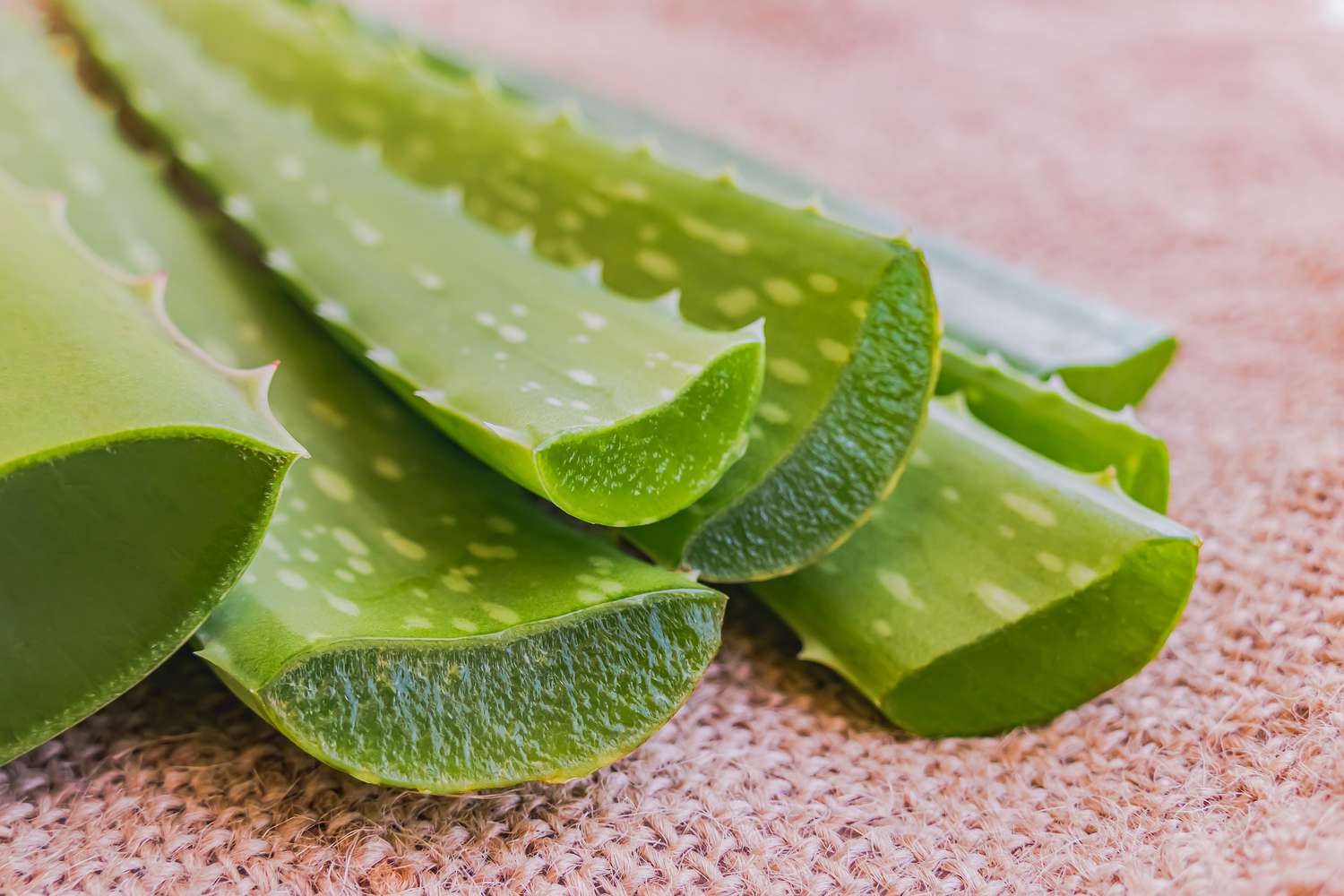Aloe vera is one of the most beautiful plants out there with its stunning bright green foliage that sprouts from the earth in a star shape. Aside from its fresh appearance, open one of its thick stalks and you’ll find a juicy, viscous paste that’s been used in soothing herbal remedies for centuries. You may have already used aloe vera to soothe sunburns on your body or to nurse a fresh burn in the kitchen, but is it okay to use aloe vera on your face? Let’s explore.
RELATED: The best anti-inflammatory ingredients for irritated skin
Can aloe vera be used on the face?
Heralded for its soothing and moisturizing abilities, aloe vera is an excellent skin care ingredient for facial skin. In fact, many skin care products made for the face have aloe vera infused into the formula.
Aloe vera has numerous skin benefits, including moisturizing, calming inflammation, reducing acne, and promoting healing, says Mona Foad, MD, MHS, FAAD, board-certified dermatologist and founder of MONA Dermatology.
As with any product, she recommends doing a patch test to make sure you don’t have an allergic reaction or sensitivity to the plant. This is especially important if you have sensitive or reactive skin.
Apply a small amount of aloe vera gel to a small area of skin, such as the inside of your wrist or elbow, and wait 24 hours to see if there are any adverse reactions before applying it to your face , he says If you are sensitive, applying aloe vera may cause redness, burning, or a rash.
Benefits of aloe vera for the skin
Aloe vera has a lot of benefits for the skin. Here are some of the top reasons why it only makes sense to incorporate this natural ingredient into your beauty regimen.
- Soothes rashes, irritations and inflammations
- Its antioxidant is rich in vitamins A, C and E, which can help defend against free radical damage
- The anti-inflammatory qualities help soothe burning and redness almost immediately
- Hydrates and plumps without feeling greasy
- It tackles breakouts thanks to its antibacterial and soothing properties
- It promotes wound healing and can help speed up the recovery process for cuts, burns and other minor injuries.
- It can tighten the appearance of pores and create smoother skin thanks to its astringent effect
How to use aloe vera on your face
You can use aloe vera on your skin in three different ways: applied directly from the plant, mixed into a DIY recipe, or as part of a pre-formulated beauty product.
Applied directly
Aloe straight from the plant is the most effective, says Erica Marie Gatt, esthetician and founder of EM Skin. You can cut a small piece off the tip of a stem, then extract the pinch directly from the plant and apply as needed.
You can also squeeze out as much as you can, then store it in a mason jar in the fridge or freezer for a more soothing treat. These methods ensure that you are using pure, natural aloe vera without any added ingredients or preservatives.
Mixed in a DIY recipe
The world of your oyster when it comes to DIY skin care recipes with aloe vera. You can squeeze some into a DIY body scrub to soothe as you exfoliate, add a dash of vitamin C to make your own antioxidant serum, or combine a tablespoon of aloe vera gel with a tablespoon of honey for a mask soothing and anti-acne facial. .
Formulated beauty products
Many skin care products contain aloe vera as a key ingredient due to its soothing and moisturizing properties. It might not even be a featured ingredient, but it’s still included in the mix. One of Gatts’ favorites is the Face Reality Calming Facial Toner ($29, Face Reality Skincare) which combines rose water with aloe leaf juice to soothe, calm and nourish.
Another great option is Summer Fridays Super Amino Gel Cleanser ($35, Sephora) and a pH-balancing cleanser with amino acids, seawater, and aloe. Epicuren Aloe Vera Soothing Gel ($18.70, Epicuren), which is made with whole leaf aloe, cucumber tea extract, and green tea extract.
#Aloe #Vera #good #face #Heres #experts
Image Source : www.realsimple.com
